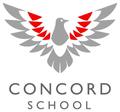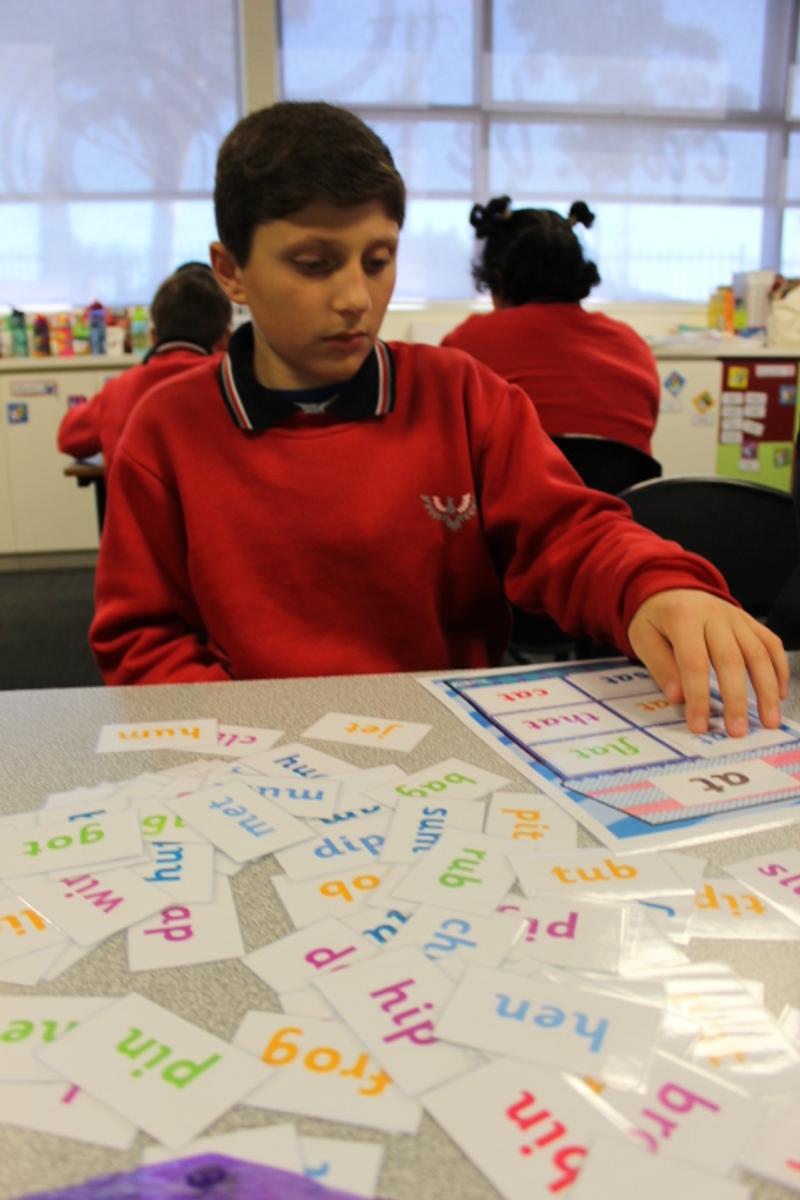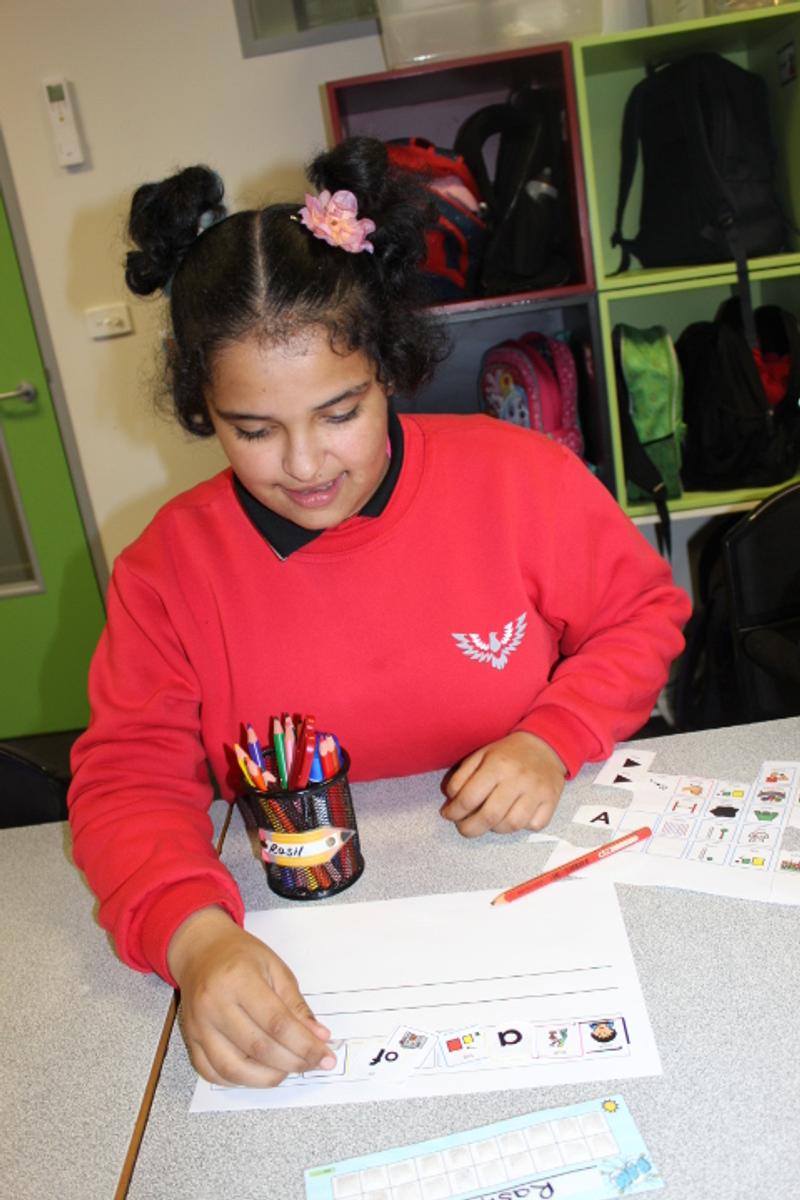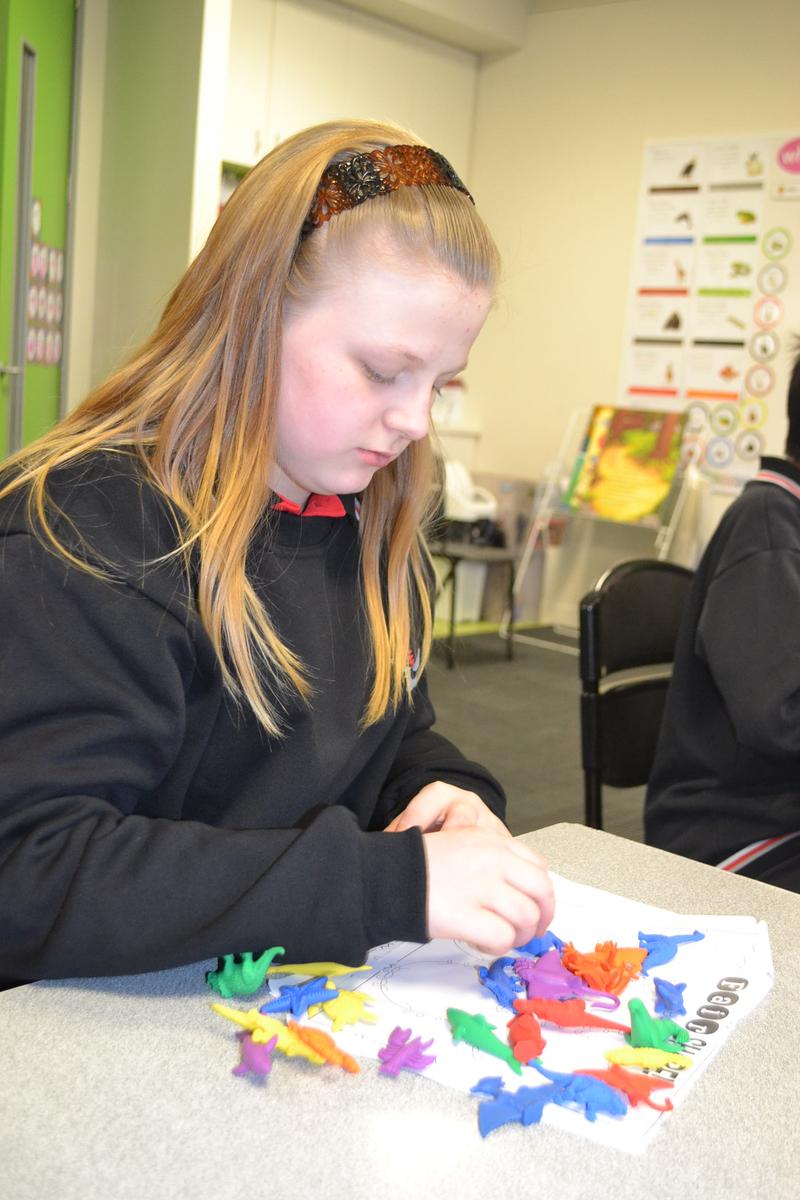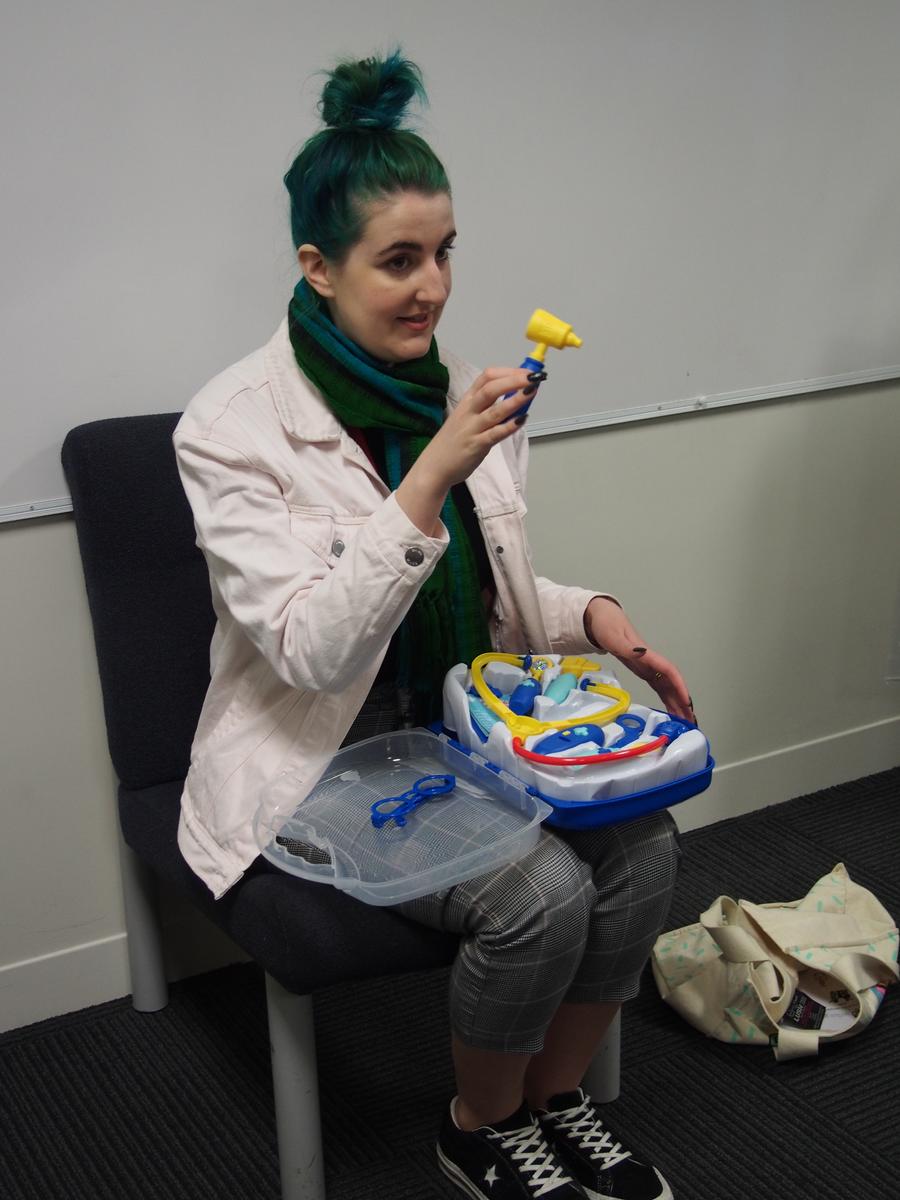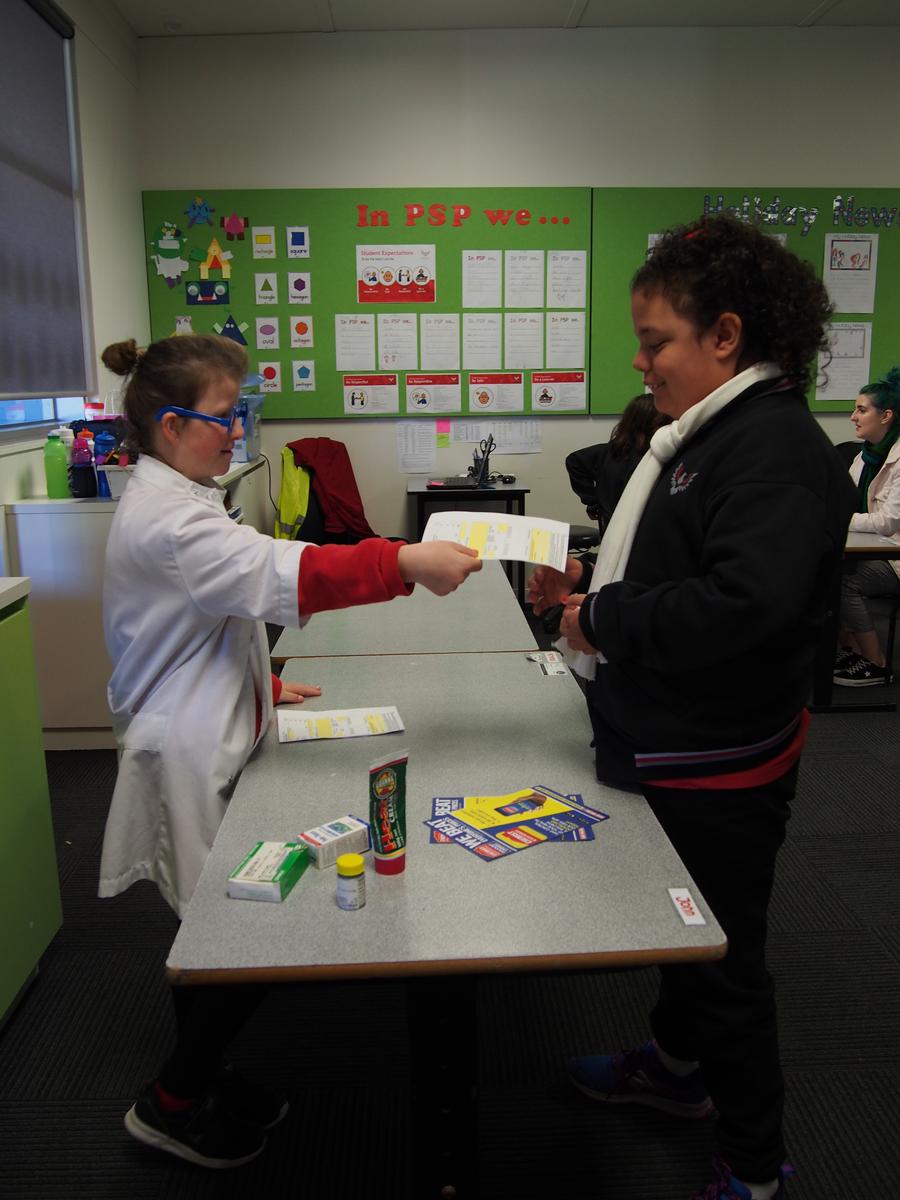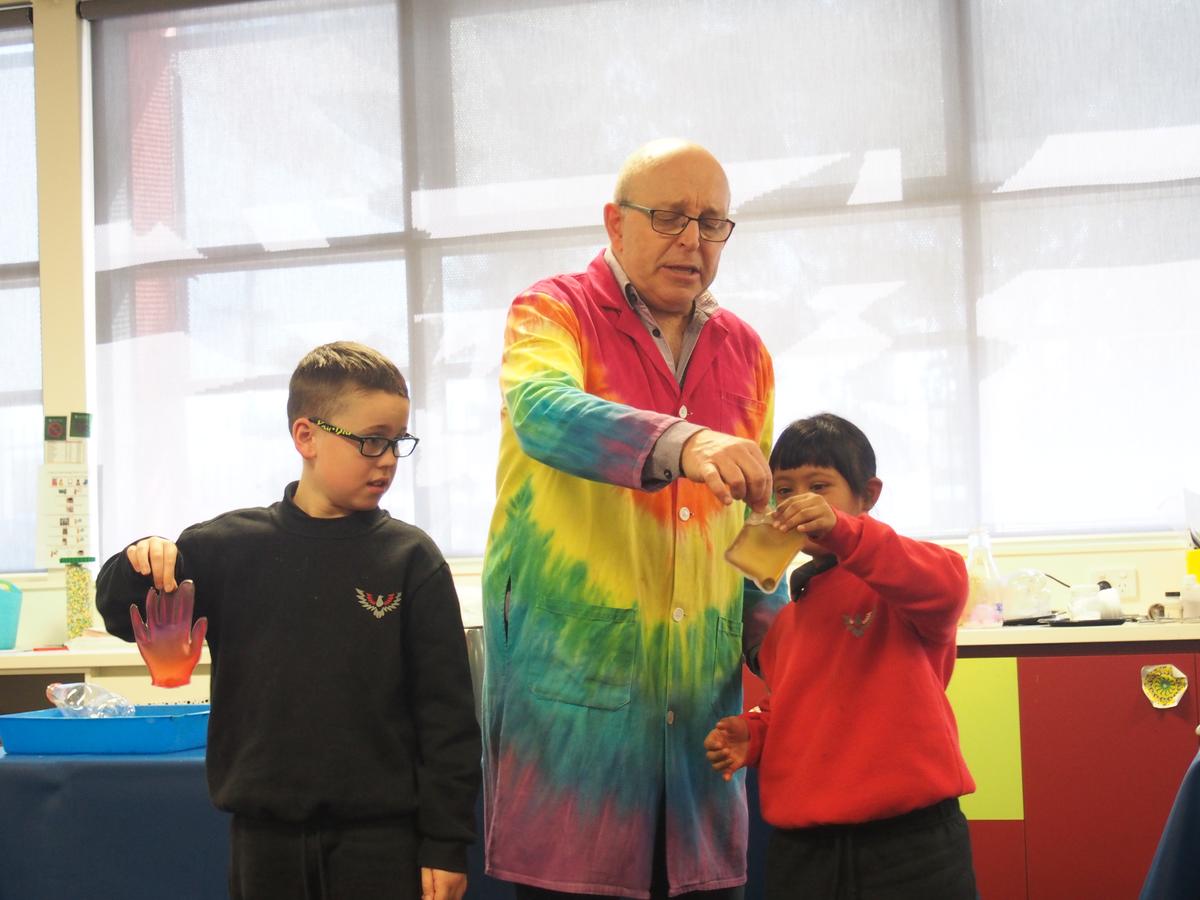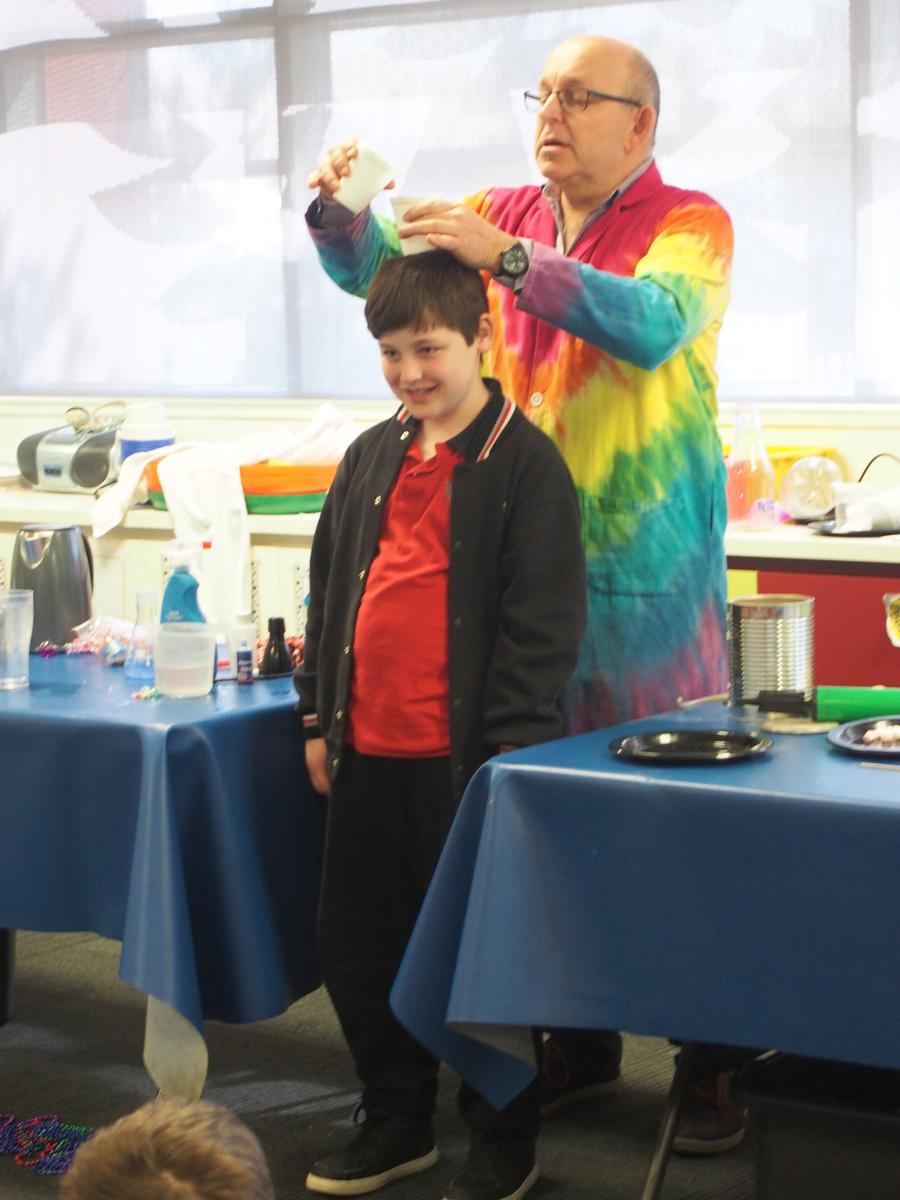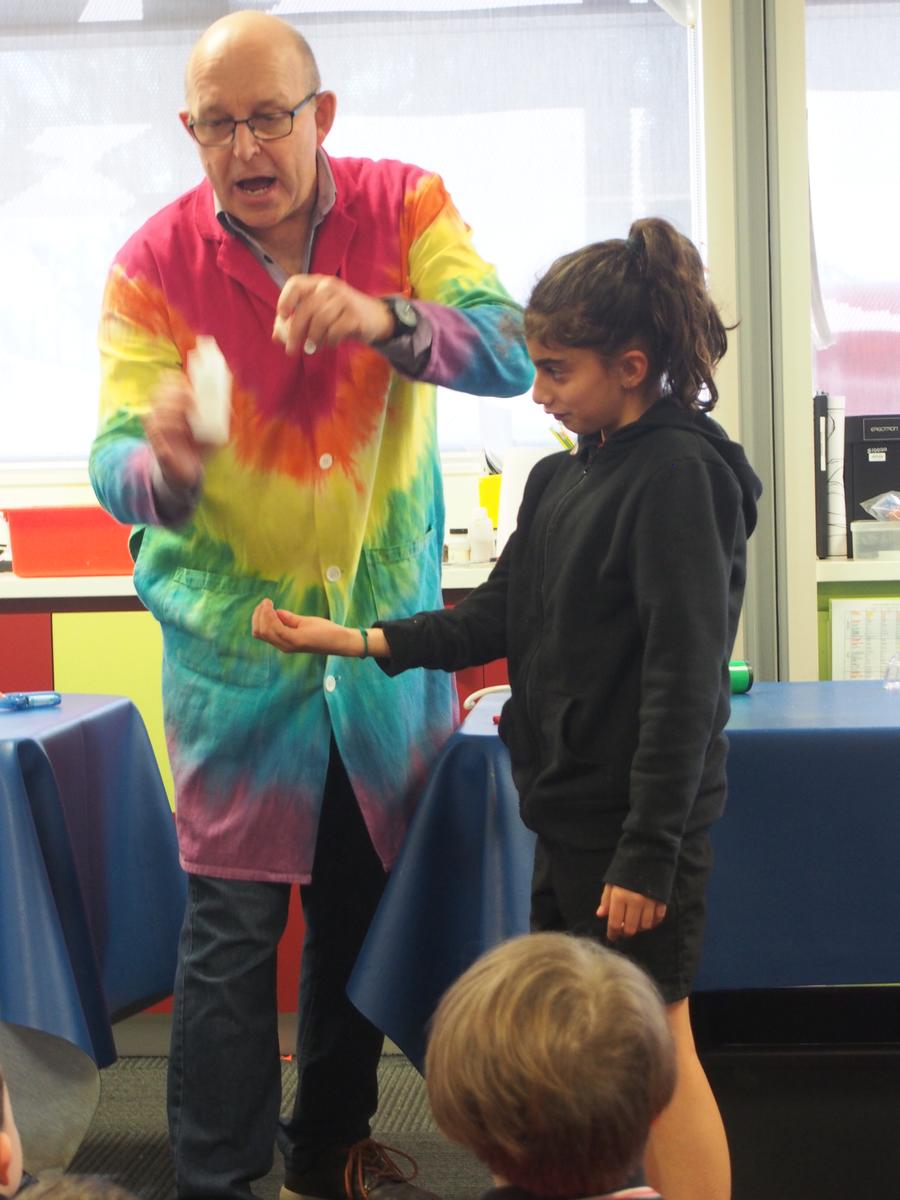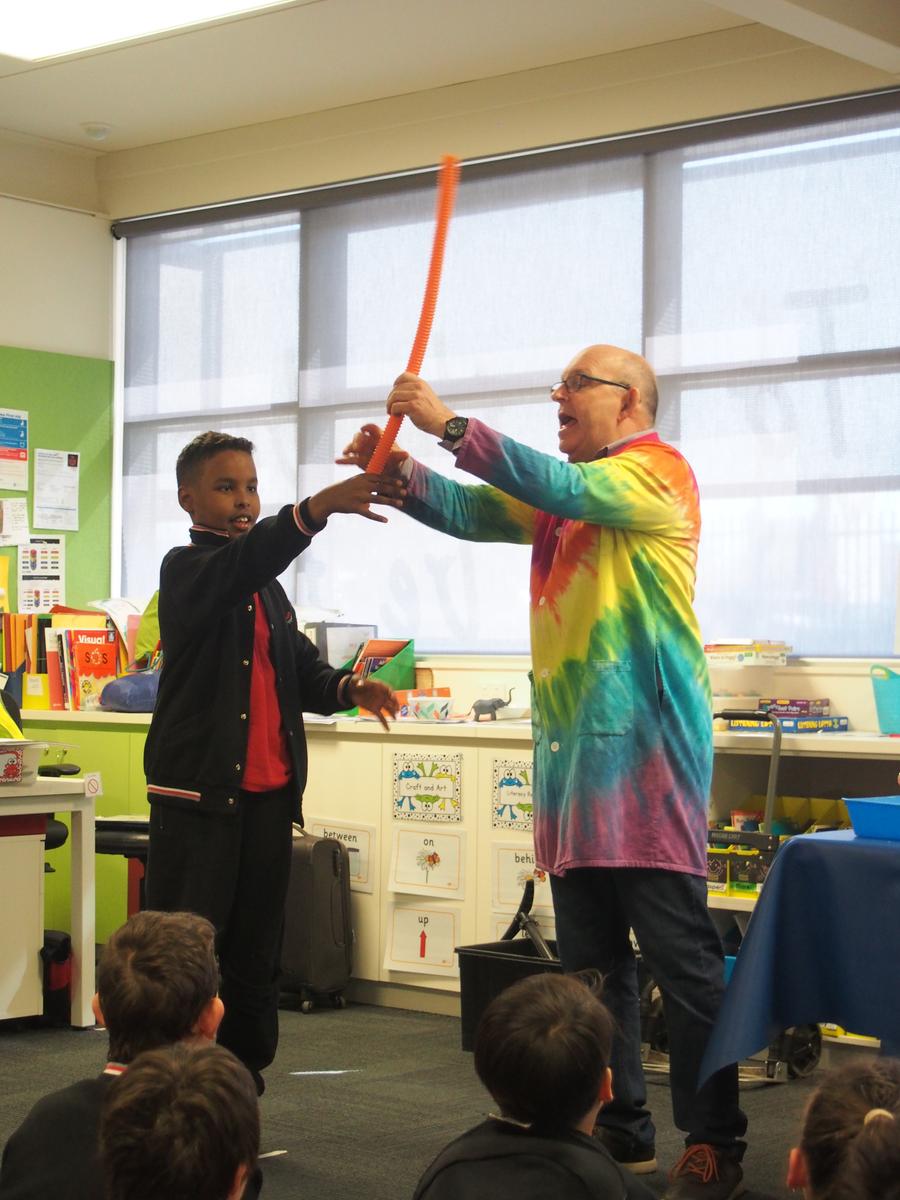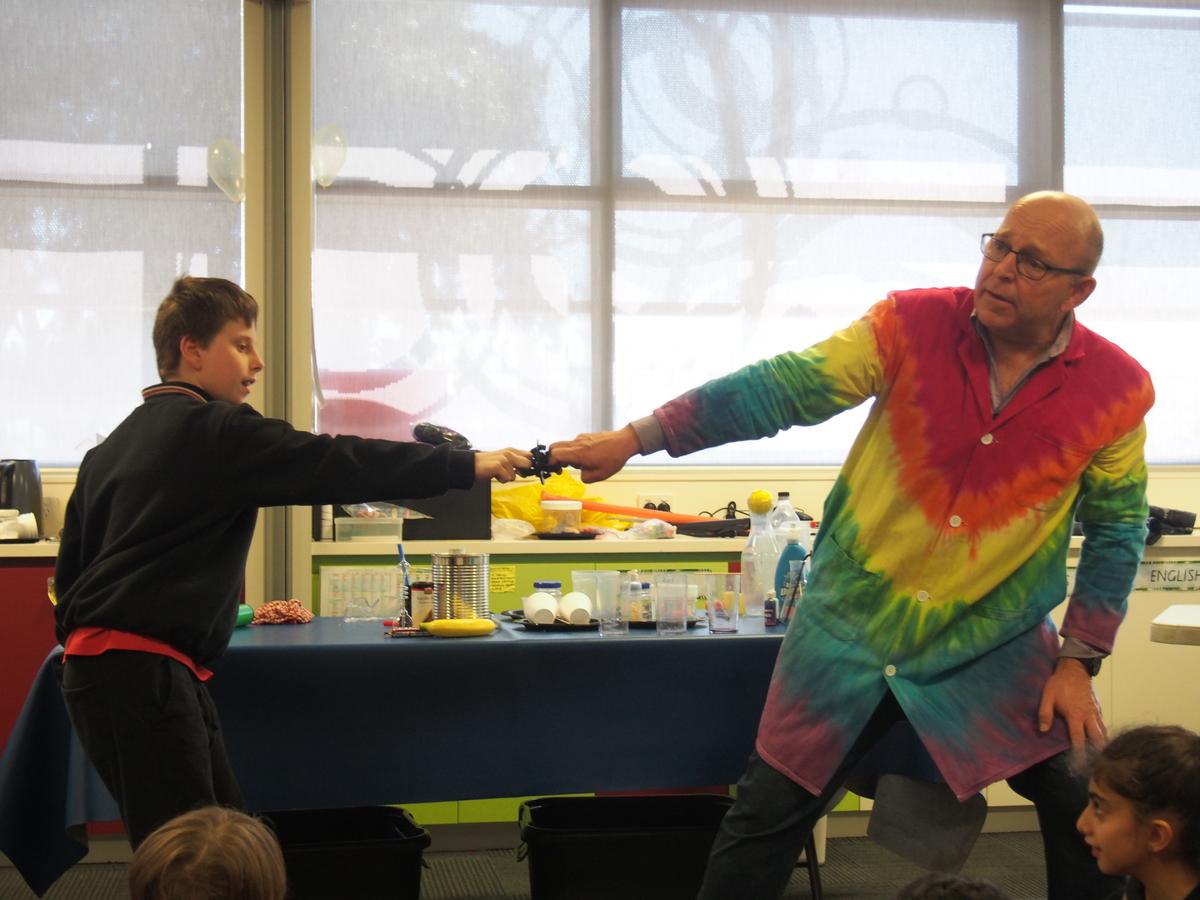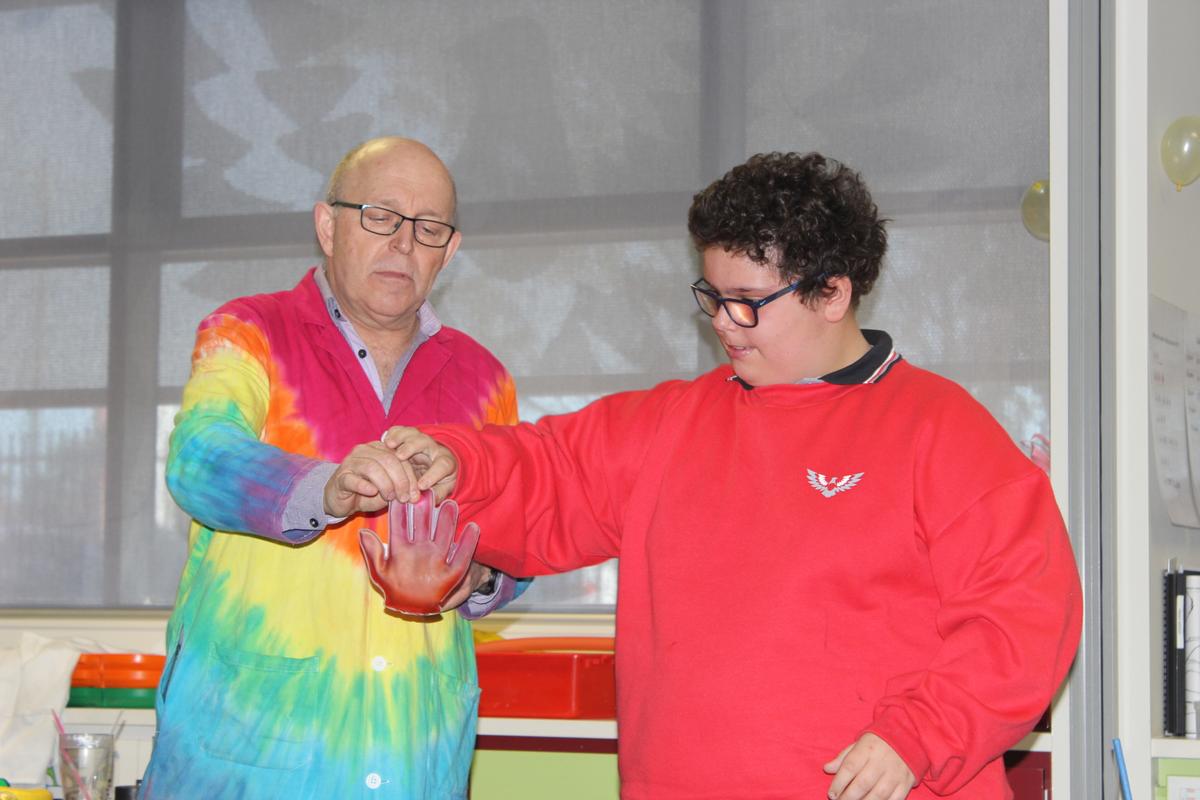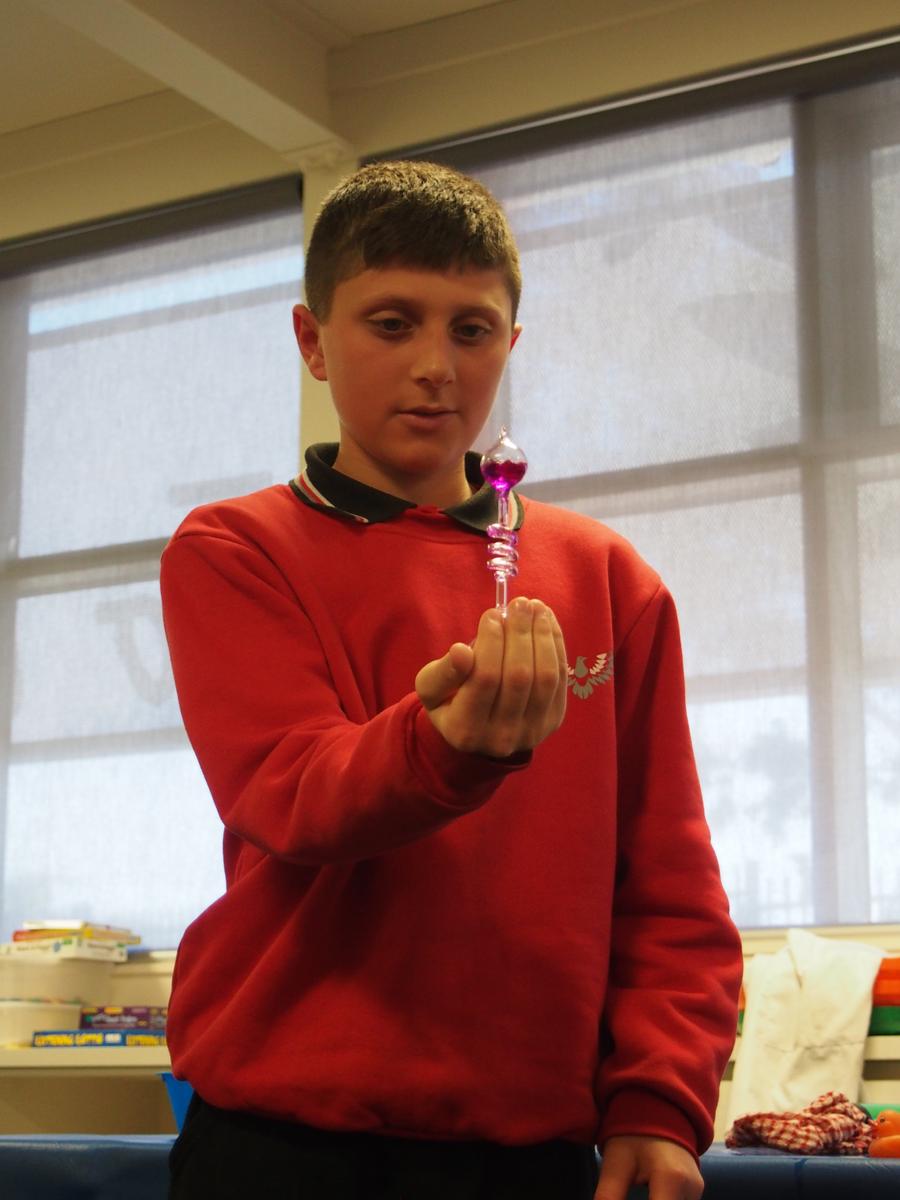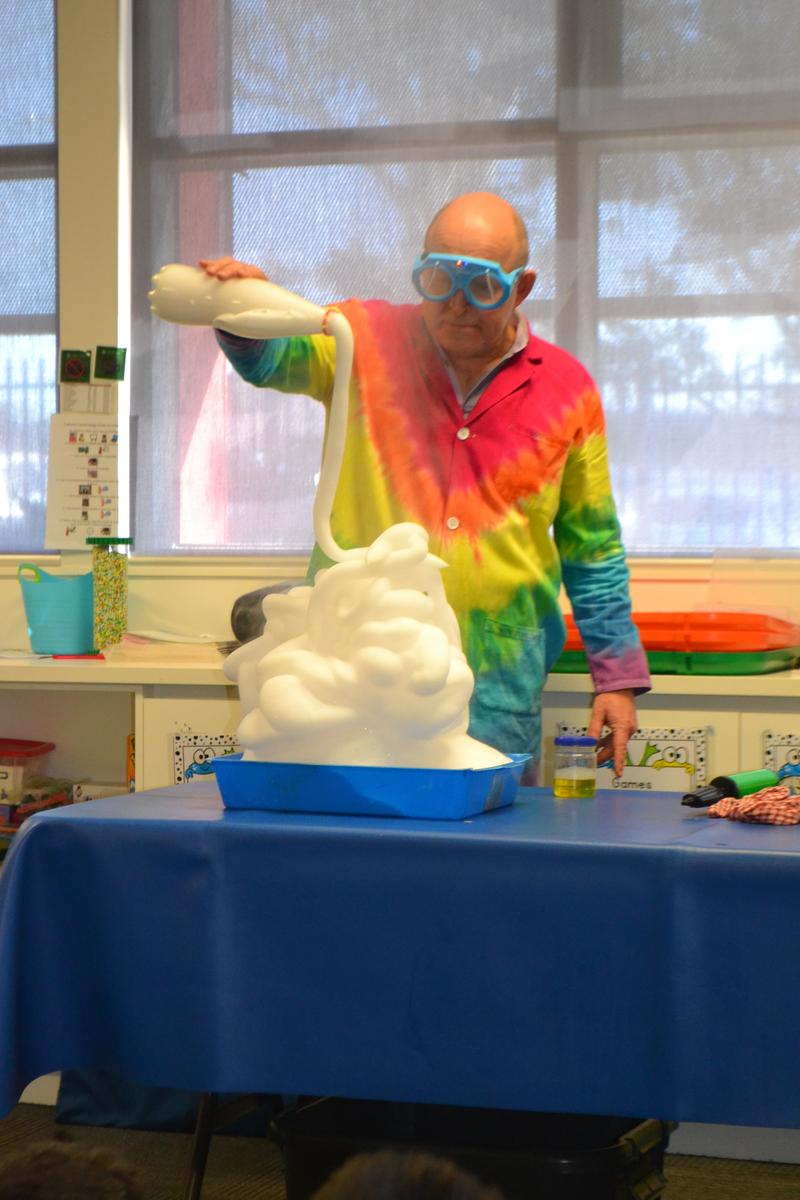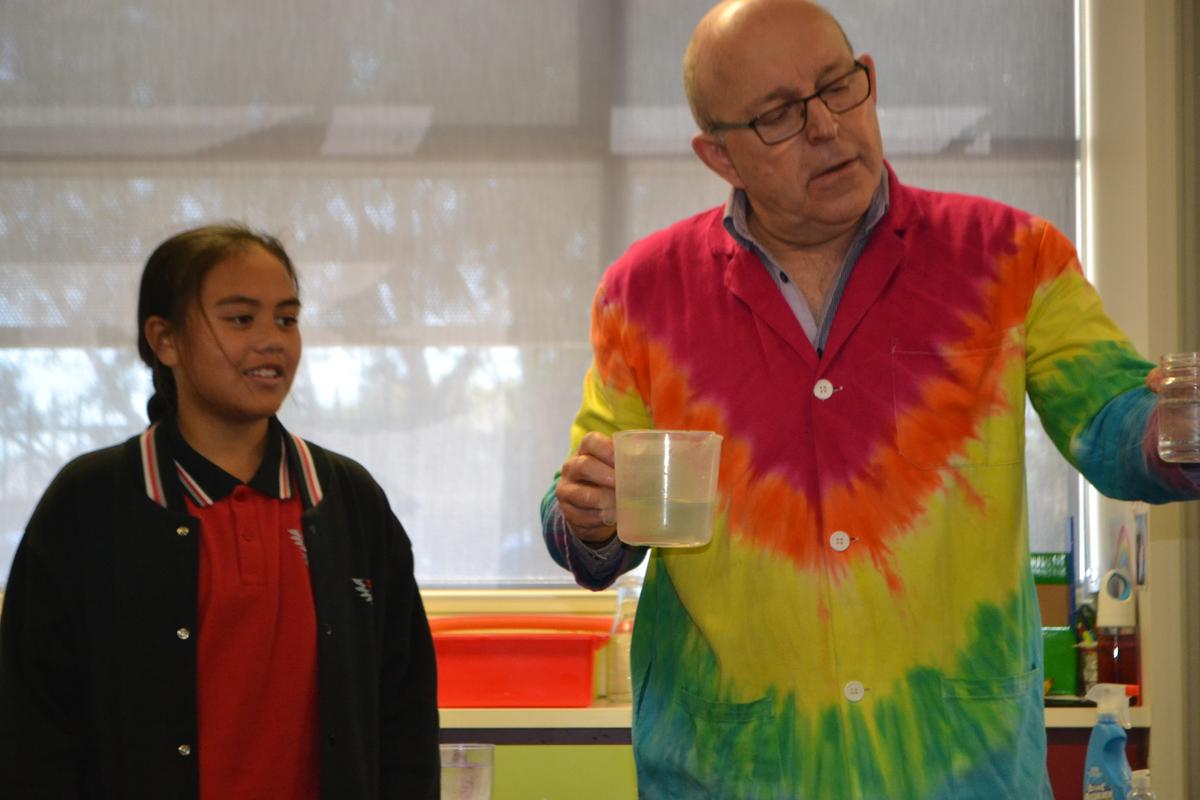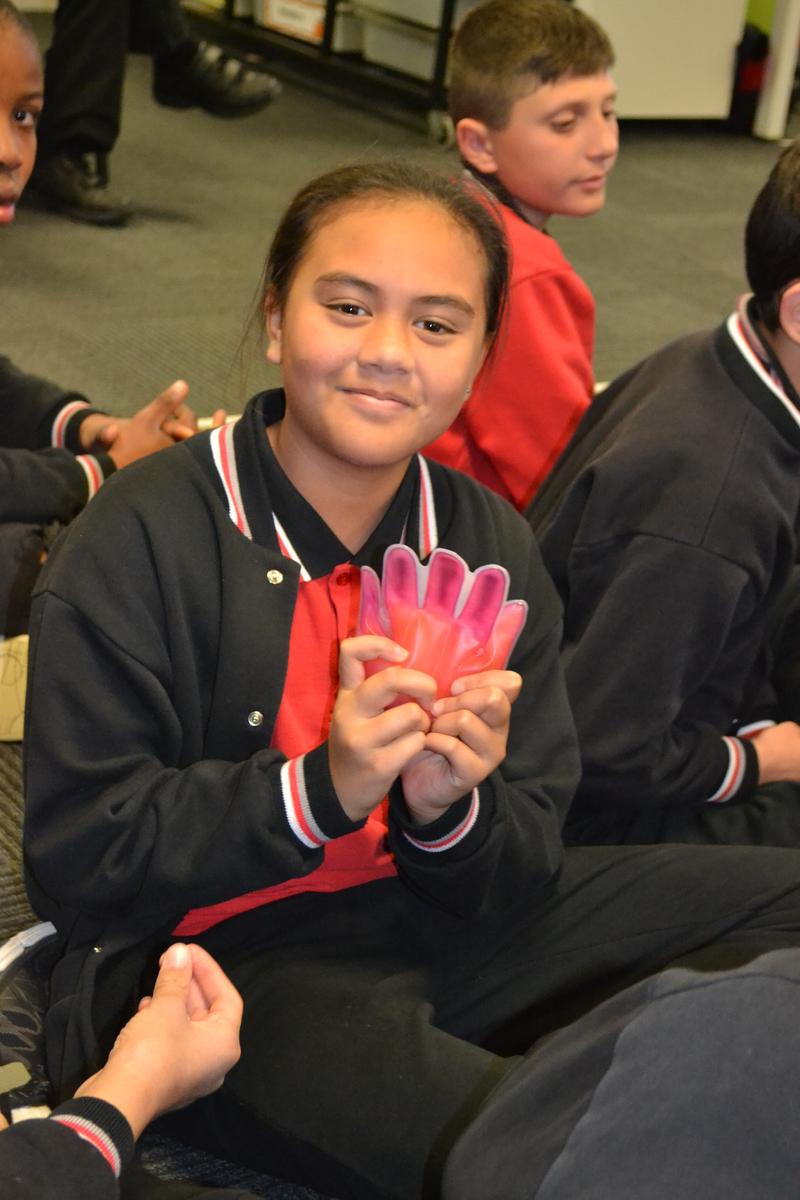Upper Primary Learning
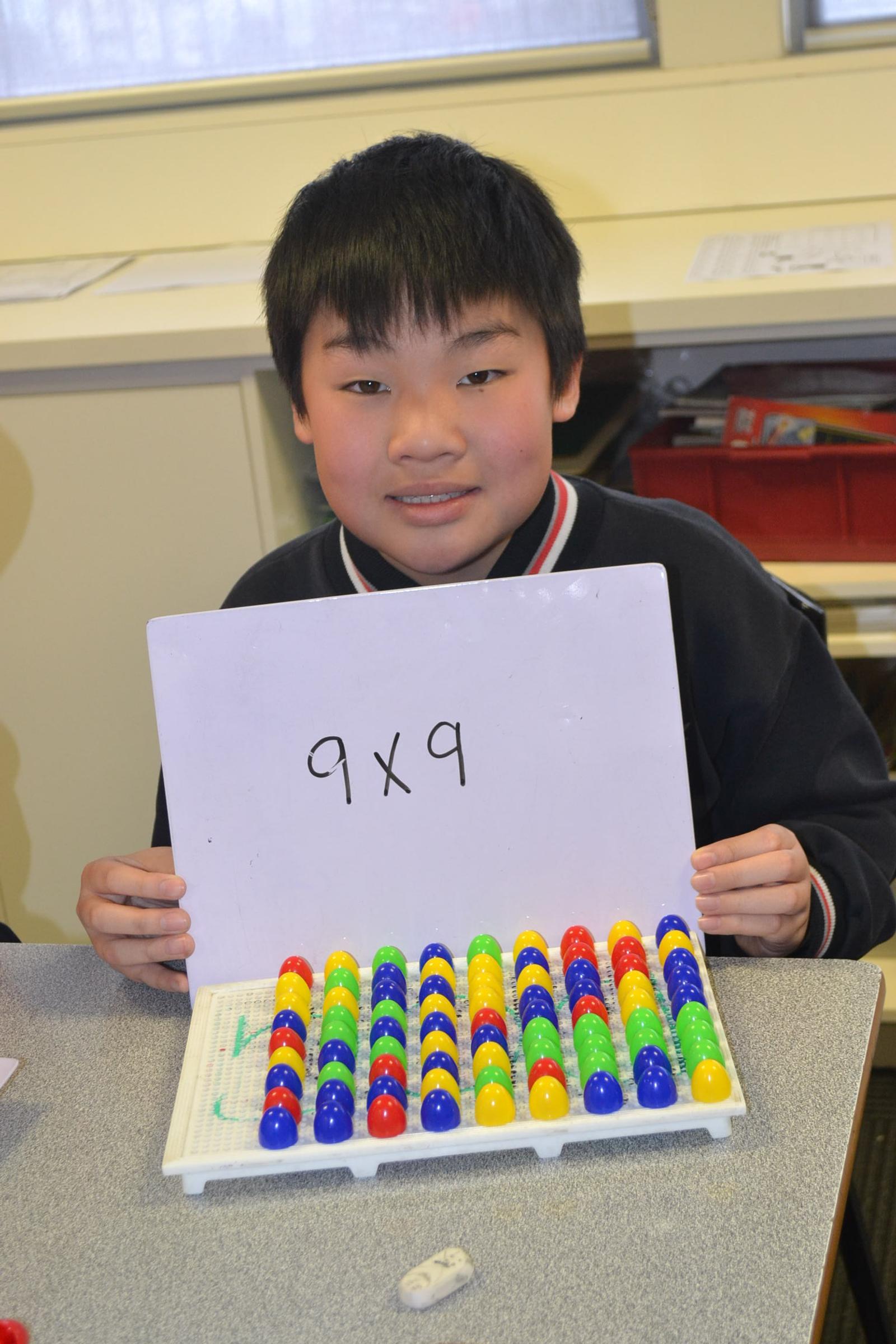
Welcome
Welcome to week 9! Last week students in Upper Primary attended an incursion run by Professor Bunsen. The incursion focussed on:
- the properties and difference between solids, liquids & gases
- the kinetic model of boiling and how gases form
- phase changes using physical and chemical changes
- many examples of changes in state of matter
- fun and explosive chemical changes (solid& liquid –> gas)
- see how hard gases can ‘push
All classes were thoroughly engaged by the presentation and enjoyed observing the changes that occurred during various reactions.
English
Classes have started to explore Decoding Strategies. This focus builds on previous learning covered in Phonics and Word Knowledge. The students are explicitly taught decoding strategies and then supported to apply these strategies to unknown words in texts they are reading. The strategies that the students have been learning to use include:
Eagle Eye – look at the picture.
Lips the Fish – Get your mouth ready. Make the first sound.
Stretchy Snake – Stretch out the sounds, then blend.
Skippy Frog – Skip over the word, then come back and re-read.
Chunky Monkey – Look for chunks and small words you know.
Careful Caterpillar – Carefully read the whole word.
Flippy Dolphin – If the short vowel doesn’t work, flip it and try the long vowel.
Trying Lion – If one strategy doesn’t work, try another and another.
The students have been busy working on descriptive writing pieces over the past few weeks. During the planning phase students used graphic organisers to document important details to be included in their writing (sight, hearing, touch, smell and taste). They have completed a draft of their descriptive writing piece and are now looking at the revising and editing phase.
The following is a draft title ‘Popcorn’ written by students in PKO.
Popcorn
We ate popcorn in PKO. Then we described popcorn using our five senses.
The popcorn cooked in a popcorn machine. It made a loud popping sound. Popcorn is white and fluffy. It is soft and smooth but also rough. When it is cooked the popcorn smells fresh. It is warm and salty. The popcorn is crunchy and delicious.
Students have started using checklists to support revising and editing their work:
Revising: Have I written and interesting introduction? Have I used interesting vocabulary? Have I used a variety of connectives? Have I used complete sentences? Does my conclusion make sense?
Editing: Do my sentences begin with capital letters? Have I spelt words correctly? Does each sentence finish with a punctuation mark? Have I used paragraphs? Is my work presented neatly?
Once students have completed the revising and editing phases they will move onto publishing their work.
Mathematics
Students have continued to focus on multiplication and division. They have been learning about what makes a group equal and how to divide up a collection so that everyone has a fair share. The students have been highly engaged by the books Dizzy Dinosaurs and a Bears Share where they have been encouraged to explore everyday problems to make equal groups. Interactive resources have provided the students with the opportunity to further develop their understanding and knowledge of sharing a collection equally amongst multiple groups.
Some classes have started looking at multiplication as repeated addition as well in the form of an array. Arrays are an arrangement of objects in columns or rows. The students have enjoyed using arrays to represent multiplication concepts (eg, 4 columns and 3 rows).
Students have been thoroughly engaged by the length activities they have participated in over the past couple of weeks. A surprise letter from a ‘giant’ had students bursting with excitement as they used the footprint he left behind to locate items that were longer or shorter. The footprint was also used as a form of informal measurement. Student estimated how many footprints long various objects and distances were and then used the footprint to measure the length.
Social Competencies
Recently in social comp we’ve been talking about going to the Doctor and going to the Chemist. Students role played going to the Doctor and sitting in the waiting room, explaining their symptoms, being examined and then getting a prescription. Students took their prescription to the chemist where they were given medication and instructed on how to take it. Students have been encouraged to speak for themselves when at the Doctor to practice identifying feelings of sickness in their body and articulating them. We have also stressed the importance of taking medication safely with help from a trusted adult. Meanwhile, some of the older grades have looked at where medicine goes inside the body by looking at the “food pipe” and the “air pipe”.
It’s been lots of fun and the students loved pretending to be a Doctor, Pharmacist and/or a patient.
Integrated Unit
As the term very quickly comes to a close Upper Primary classes have once again participated in a variety of activities related to our integrated unit’Spot the difference’
PSP and PCS have been looking at the changes in chocolate. They spoke about the ways you can change chocolate from a solid. Students came up with several ideas about how to melt the chocolate other than using a microwave. They melted milk and white chocolate and poured it into moulds so that it would create a solid again.
In PKO they have been looking more at different materials. They have looked at different ways materials can be changed, including, dissolving, mixing and stretching. They have begun experimenting with different objects in the room to find ways in which they can change. The students discovered that rubber items, such as rubber bands and balloons can be stretched, whereas paper and pencils cannot. They also discovered that items that can stretch, can also bend. The incursion with Professor Bunsen last week, helped everyone gain a better understanding of reversible and irreversible materials. Materials like chocolate and ice are reversible because they can be changed and changed again.
Last week PDJ and PJF discussed some of the physical and chemical changes that they saw with the Professor Bunsen incursion. PDJ and PJF completed a physical change experiment last week by turning cream into butter. The students put some cream into a jar with a lid. They shook the jar until the cream solidified into butter. They put all the butter from the jars into a container and will use it this week to spread onto some bread or pikelets. The students timed how long it took the cream in their jar to turn into butter.
PJT and PMB investigated the water cycle, making water cycles in bags. They had fun melting chocolate, looking at the rates of different chocolate melting. They compared the differences between cooked and uncooked pasta and melted icy poles into mysterious liquid puddles.
Focus on Fun
Feely boxes are a great way to help your child to build descriptive language. Hide items in a box and have your child describe the item to you. See if you can guess what the object is based on the description. Repeat. This time you describe the object and have your child guess what it is based on the description.
Chris Norman - Upper Primary Team Leader
Kirsten Coulter - Teaching and Learning Coordinator
